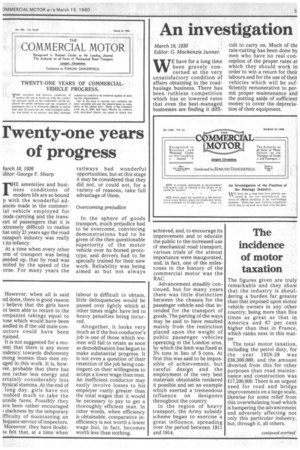Twenty-one years of progress
Page 57

If you've noticed an error in this article please click here to report it so we can fix it.
/arch 16, 1926 ditor: George F. Sharp THE amenities and business conditions of modern life are so bound p with the wonderful adances made in the commerial vehicle employed for ,00ds carrying and the translort of passengers that it is xtremely difficult to realise hat only 21 years ago the road ransport industry was really 1 its infancy.
At a time when every other 3rm of transport was being peeded up, that by road was mited by the speed of the orse. For many years the railways had wonderful opportunities, but at this stage it may be considered that they did not, or could not, for a variety of reasons, take full advantage of them.
Overcoming prejudice In the sphere of goods transport, much prejudice had to be overcome, convincing demonstrations had to be given of the then questionable superiority of the motor vehicle over its horsed prototype, and drivers had to be specially trained for their new work. Reliability was being aimed at but not always achieved, and, to encourage its improvement and to educate the public to the increased use of mechanical road transport, various trials of the utmost importance were inaugurated, and, in fact, one of the milestones in the history of the commercial motor was the RAC.
Advancement steadily continued, but for many years there was little distinction between the chassis for the passenger vehicle and that intended for the transport of goods. The parting of the ways may be said to have resulted mainly from the restriction placed upon the weight of public passenger vehicles operating in the London area, by which the limit was fixed at 31/2 tons in lieu of 5 tons. At first this was said to be impossible of achievement, but careful design and the employment of the very best materials obtainable rendered it possible and set an example which exerted a tremendous influence on designers throughout the country.
In the region of heavy transport, the Army subsidy scheme began to exercise a great influence, spreading over the period between 1911 and 1914.
































































































































